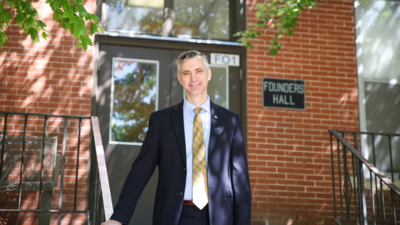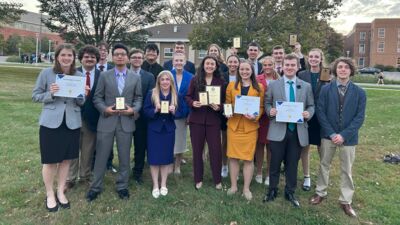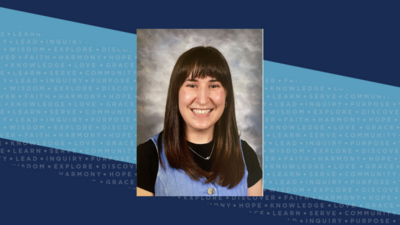Concordia junior Charlie Hayden uses drone technology to survey tornado damage

When a tornado swept through Concordia University, Nebraska junior Charlie Hayden’s hometown of Elkhorn, Neb. on April 26, he chose to reveal the damage it caused from a unique vantage point: in the air, as captured by a drone. Hayden recently took Dr. Joel Helmer’s Drone Technology and the Global Positioning System course, after which he purchased a drone of his own. It was this piece of technology that enabled him to capture the extent of the tornado damage to Elkhorn from above.
The EF-3 tornado touched down in Elkhorn in the late afternoon of April 26, leaving several homes flattened and many more damaged. It was the first of several EF-3 tornados to touch down in the region that day, with others hitting Omaha’s Eppley Airfield as well as Minden, Iowa, and Waverly, Neb.
“Drones excel in capturing detailed images of devastation, offering a panoramic view that encompasses the entirety of the affected area in a single shot,” said Hayden about his drone footage. “This comprehensive perspective is highly important, particularly for organizations like the National Weather Service, which rely on accurate assessments of tornado damage to assign an EF scale rating.”
The ability to observe and document damage from an aerial perspective not only enhances the efficiency of assessment efforts but also provides crucial insights for disaster response and recovery initiatives.
Interestingly, Hayden also chose this semester – long before the tornado occurred in Elkhorn – to research the spatial distribution of tornado activity throughout the United States from 1950-2022. He presented a poster on this research at Concordia’s academic and research symposium shortly before the tornado that devastated his hometown.
“The aim of this project was to construct a comprehensive tornado time series, intending to uncover any discernible trends or patterns in tornado activity across the United States,” Hayden said.
Although his hypothesis – that he would uncover a recent shift in tornado occurrences in the southern United States – was not clearly supported by his discoveries, it encouraged him to dig deeper into the issue.
“I segmented the years into decade sections, allowing for a more granular examination of tornado tracks throughout the years,” he said. “This approach not only enhanced the visual representation of tornado activity but also facilitated a more complete understanding of potential localized variations over time.”
His symposium presentation may have focused on exploring past tornado occurrences, but he was able to combine his interests in drones and tornado tracking in the present just four days later, as he brought his drone home to Elkhorn to capture images of the town after the tornado.
“Providing images such as these gives the community of Elkhorn a complete understanding of the damage that was done,” he said. “The ability to observe and document damage from an aerial perspective not only enhances the efficiency of assessment efforts but also provides crucial insights for disaster response and recovery initiatives.”
Hayden speaks highly of the benefits of drone technology, saying that it can provide businesses and policymakers with a more effective and convenient alternative to viewing the world from ground-level.
“Leveraging an aerial perspective enables [drone] users to harness a multitude of viewpoints, fostering a holistic approach to task completion and workforce management,” he said.
After he graduates from Concordia, Hayden will seek to apply his love of drones in a professional capacity. He hopes to land a job in the drone industry, focusing on disaster management, real estate or construction and cites the projected increase in demand for drone pilots in the future as one reason he is excited to enter the industry. He also credits Helmer, his academic advisor at Concordia, with encouraging his interest in drone technology.
“[Helmer’s] ability to give real-life scenarios in the workplace enhanced my skills and confidence in possibly becoming a drone pilot in the future,” he said.
He also expressed his appreciation for the unique experiences he’s had at Concordia: “Concordia University, with its smaller size, allows students to experience more hands-on activities to enhance their learning and overall development for future job opportunities.”
Concordia’s geography program allows students to explore God’s creation with a combination of classroom-based and hands-on approaches. Learn more about how you can fulfill your calling in geography by exploring the program’s many course options here.


